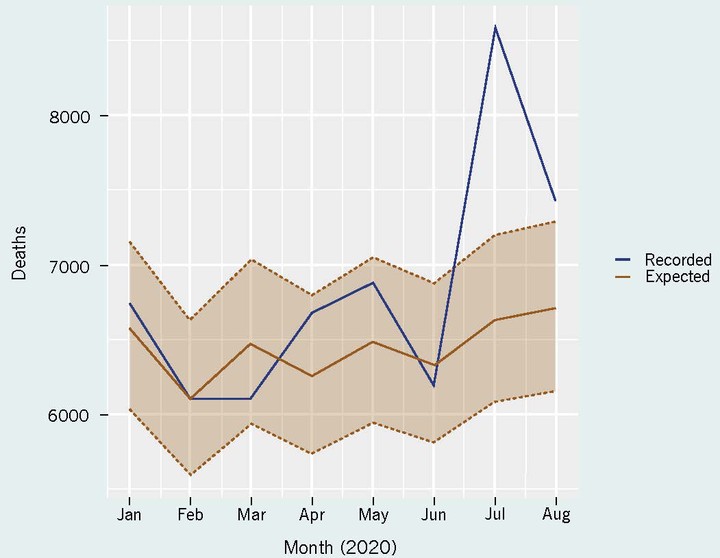Tool for tracking all-cause mortality and estimating excess mortality to support the COVID-19 pandemic response

Abstract
Quantifying mortality from coronavirus disease (COVID-19) is difficult, especially in countries with limited resources. Comparing mortality data between countries is also challenging, owing to differences in methods for reporting mortality. Tracking all-cause mortality (ACM) and comparing it with expected ACM from pre-pandemic data can provide an estimate of the overall burden of mortality related to the COVID-19 pandemic and support public health decision-making. This study validated an ACM calculator to estimate excess mortality during the COVID-19 pandemic. The ACM calculator was developed as a tool for computing expected ACM and excess mortality at national and subnational levels. It was developed using R statistical software, was based on a previously described model that used non-parametric negative binomial regression and was piloted in several countries. Goodness-of-fit was validated by forecasting 2019 mortality from 2015–2018 data. Three key lessons were identified from piloting the tool: using the calculator to compare reported provisional ACM with expected ACM can avoid potential false conclusions from comparing with historical averages alone; using disaggregated data at the subnational level can detect excess mortality by avoiding dilution of total numbers at the national level; and interpretation of results should consider system-related performance indicators. Timely tracking of ACM to estimate excess mortality is important for the response to COVID-19. The calculator can provide countries with a way to analyse and visualize ACM and excess mortality at national and subnational levels.